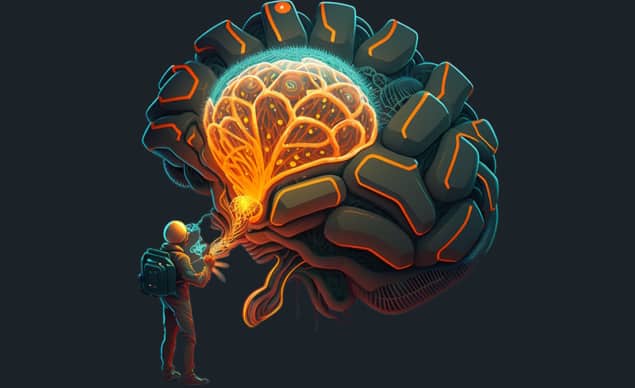
A new nanosurgery technique could help treat glioblastoma, one of the most common and aggressive of all primary brain cancers. The technique, which relies on injecting nanotubes containing iron particles into a tumour site, could be used against cancers that are resistant to existing therapies and those located at vital and currently inoperable regions of the central nervous system.
Glioblastoma is among the most dangerous types of brain cancer. Although it is currently uncommon, affecting between 0.59 and 5 people per 100 000, its incidence is increasing around the world.
Standard techniques for treating glioblastoma are based on removing the tumour surgically, followed by radiotherapy and chemotherapy using drugs such as temozolomide. The problem is that glioblastoma develops resistance to this and other therapeutics that target the tumour’s biomolecule signalling pathways, leading to treatment failure, relapse and – all too often – death for the patient.
A new “Trojan horse” approach
Researchers at the University of Toronto and The Hospital for Sick Children (SickKids) recently made an intriguing discovery: glioblastoma cells respond to external mechanical forces. Led by Yu Sun and Xi Huang, the researchers have now used this insight to develop a new “Trojan horse” approach for treating glioblastoma using magnetic carbon nanotubes (mCNTs). These nanotubes are rolled-up sheets of carbon filled with iron nanoparticles that can be magnetized by applying an external magnetic field.
Sun, Huang and colleagues coated the mCNTs with an antibody that recognizes a specific protein (CD44) on glioblastoma tumour cells. When they inject these coated mCNTs into glioblastoma tumours in mice, the nanostructures “seek out” these proteins and attach to the cells. At this point, the researchers apply a rotating magnetic field that precisely targets the tumour region. This magnetic field mobilizes mCNTs to damage the internal structures of glioblastoma cells and destroy them.
“Our nanomaterials function as swarms of ‘nano-scalpels’ to physically treat tumours by applying mechanical torque and force to the structures of cancer cells,” says study lead author Xian Wang. “These nano-scalpels are precisely controlled to mobilize through the application of a tumour-targeting rotating magnetic field.”
This “mechanical nanosurgery” technique, as the researchers call it, is completely different from conventional approaches. Because it uses brute mechanical force to disrupt tumour cellular structures rather than targeting specific bio-signalling pathways, it could help overcome therapy resistance of this biologically plastic disease, the researchers write in Science Advances.

Two-in-one gel suppresses aggressive brain tumours
According to the team, the technique could be adapted for treating brain tumours not usually accessible to resection. “Such tumours not only include primary glioblastoma,” explains Wang, “but also recurrent glioblastoma, multifocal brain tumours, and tumours situated at vital and inoperable central nervous regions – for example, diffuse intrinsic pontine glioma (DIPG) in the brainstem.”
In the present work, the researchers employed mCNTs with iron oxide particles inside the tubes. Their next aim is to tune the percentage of iron in the nanotubes and optimize their protocol to improve treatment efficacy. “Another advantage of mechanically mobilizing mCNTs is that besides physically disrupting cellular structures, they can modulate specific biochemical pathways, based on which we are developing combination therapy to tackle untreatable brain tumours,” Wang concludes.



